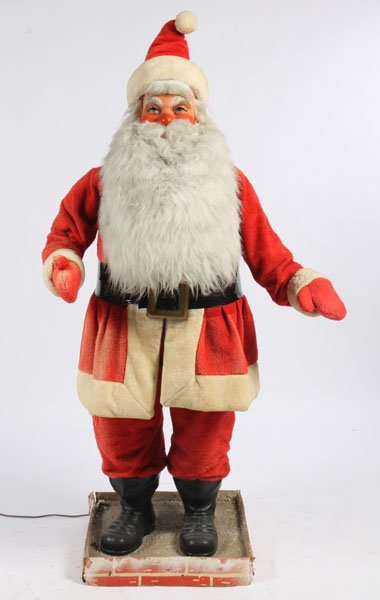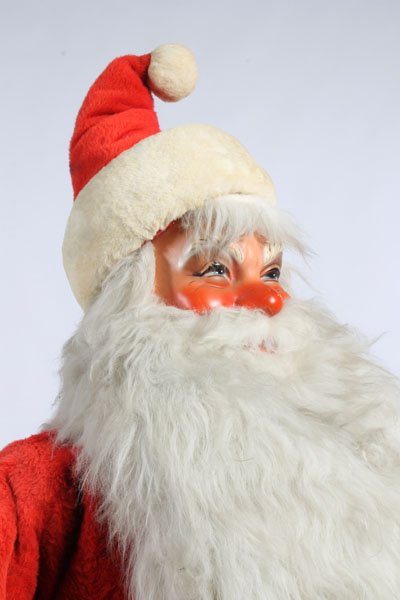When I was growing up, my mom worked in the emergency room of our local hospital. She worked nights, and one of the nurses that worked the night shift with her was an older woman named Clyde. She was a tough, gritty, no-nonsense type of lady who in my child’s mind looked like a female Clint Eastwood, with a leathered face, shorn gray hair and gravelly voice. She chain smoked. I’m pretty sure she could kill a bear with her hands. But to us she was sweet and kind and funny. I always enjoyed her company.
Clyde had a cabin, way up in the Sierra Nevada Mountains, somewhere off Ice House Road, deep in the Rubicon, just past the Placer County line. Every summer she would take a long vacation and live in the cabin, two maybe three months in duration if I recall correctly. Every Labor Day, in the waning days of summer vacation, and the final three-day weekend before school started, we would drive up into the mountains and stay for two or three nights in Clyde’s Cabin.
It had running water, piped in from the nearby creek, but no water heater. No electricity, though it did have a generator, or perhaps just a large propane tank that was only used to power the lights for a few hours around dinner and game time. She had an old-fashioned cast-iron cookstove in the corner that she heated with wood from the stack of logs out back. Often she and my dad would spend an hour or two a day chopping logs. No toilets, either. There was a wooden framed out-house between the cabin and the creek where we were expected to go, dark, dank and spiders notwithstanding. It was always fun travelling to that thing in the dead of night with a bursting bladder, overactive imagination, and too-thin nightgown.
The cabin was two-stories and made of logs, hand-built by I think Clyde’s father and maybe an uncle back in I think the 1930s or perhaps late 20s. There was a date and maybe a handprint scratched into the concrete underneath a front window, but the details are lost to time. There was a water boiler in the bathhouse, heated by burning logs all day long so that one might take a quick 5-min lukewarm shower that evening. Across the dirt road that serviced the five or eight cabins along the creek was a large, dilapidated barn. A couple/three times over the years we entered the barn, maybe climbing to the hayloft once to peek out over the junk pile awash with rotting tin cans, bent nails and roofing materials.
The woods in that area were dark and quiet. The dirt cabin road led eventually to a rarely-used paved road that twisted up to a fire lookout tower atop a distant hill, but I was never willing/able to make the hike to see its vantage. I do remember walking the loop: up the cabin road to another dirt logging road, down the logging road to the main paved road, down the paved road to the funny cattle grate creek crossing, back to the cabin road. I had never seen a cattle grate up close before: it made a lovely “brrrruuuuutttttttt” sound when a car drove over it. Crossing it on foot was doable but tricky, the water rushing not far below your feet, a visible reminder that yes, yes I am a little afraid of heights, bridge spans, and tall places. I especially liked watching my dog, Candy, cross the grate: carefully she would place one foot in front of the next, concentrating feverishly and watching her paws as she slunk across the grate. At the intersection of the main road and the cabin road was a deep pool in the creek with a trickling waterfall that fell off a rocky overhang in a rope of water about two inches around. Standing under the falls was akin to standing under the freezing trickle of a low-pressure shower. The creek was usually too cold to swim around in much, but we tried, though usually resorted to just wading or sticking our sandaled feet in as we played in its pools and eddies.
By the cabin there was a well-worn path to the creek that my sister and I travelled every day. I had the rocks memorized and knew how to safely fly across the water like I’d been born there: first step on the flat rock that tapered off so water flowed over it, then to the tiny round one in the center, then to the larger one at the edge, then make a sharp turn and place foot at the ledge at the base of the overhanging boulder: only once you are clear of that overhanging boulder will you see the other side of the rock, the trail, the sitting spot, the woods.
Across that creek were huge boulders that my sister and I climbed upon, scaling like lizards, balancing across fallen trees, and becoming one with the wonders that was the high Sierra wilderness. We never travelled too far from home: once I followed the creek all the way up to where it crossed cabin road and followed that dirt track back down. That felt like the biggest adventure in the world to a kid my age. We didn’t need to venture far to have fantastic memories. Though there were several other cabins lining that road, we rarely saw other people about and often had full run of this magical place.
All my memories of Clyde’s Cabin are steeped in bear clover, aka mountain misery, a sticky ankle-high forest floor covering that grew at altitudes above 2000ft. I loved this smelly plant: it didn’t grow at our house in the foothills, but began growing in small patches where the elevation started to rise and where snow was common in winter. But here in the mountains it was everywhere. It would leave its resinous stink on my shoes, my clothes, my socks, my hands. For days after spending time in the mountains – either the cabin or otherwise – I’d smell of bear clover. Its piney, woody aroma is a staple in the core of my childhood memories.
After dinner most nights we would roast marshmallows in the big fireplace by the downstairs beds. Clyde was the first person I met who ate her marshmallows burned to a crisp. In her mouth she’d pop the whole thing: papery black outside, gooey white inside. My mother and sister preferred to toast theirs to a perfect golden brown. I admit they were tastier that way. But I was hasty, and took to eating the mushy ones like Clyde and my dad. Usually all us gals would play cards or board games around the table while my father dozed on his mattress-couch by the fire. When it was time, my mother and my sister and I would tromp upstairs to the bedrooms…there were at least three maybe four rooms up there, each dark and spooky, each with ancient cast-iron bedframes and lumpy mattresses. The bedclothes smelled of mothballs and the decay of the ages. My sister and I would share a double-bed at the end of the hallway next to the upstairs window. We’d lay in our sleeping bags staring up at the pitch darkness and imagine we were pioneers living hundreds of years before, in a time before cars and engines, before electricity and indoor plumbing.
Late August and early September are prime gooseberry picking time: the famed Sierra Nevada Wild Gooseberry. These puppies were delicious, but had spines sticking out of them at every angle, making them look like tiny red pufferfish hanging from the bushes. But they grew in excess around the cabin, and my sister and I would spend hours gingerly picking, peeling, and eating their tasty innards. Several times my mother would enlist us to pick enough to cart backhome with us and make into jam. My father sometimes spent the days fishing. He’d bring his gear, or borrow Clyde’s, and head to the creek to find a good, deep, secluded hole. Often he’d bring home enough fish to have a fry for dinner, and we’d stand around the barbeque just outside the front door watching the dusk encroach and the moon rise over the treetops, smelling the catch sizzling on the grill.
In the evening the coyotes would come out. They’d be terrifyingly near, and we’d hear their howling travel closer and closer as they surrounded our tiny domicile. Sometimes, the next day, we would see evidence of them around the cabin, or the barn, or the creek. But at night, in the dim, it is truly frightening. The stars are brighter atop mountain peaks like that one, brighter even then the stars I saw at home in our rural acreage miles from any town. The stars at that altitude are sharper and more shrill, demanding attention. And indeed, all these years later and I haven’t forgotten. Haven’t forgotten what the moon looks like rising over the peak of the cabin’s roof. Haven’t forgotten the smell of the forest. The sound of the nearby creek. The near-silence of the wilderness. The wind blowing softly through the tall, tall trees.
Clyde has since passed away. I’m not sure the fate of the cabin, though I do know the family held a 100-year lease with the forest service to live on national land, and that should be valid for another 10-20yrs. I’ve heard Clyde’s children still frequent the place. I imagine their children, the next generation, growing up experiencing the same wonders I did. When I was in college, and still courting the boy who would become my husband, we drove up Ice House Road and turned onto another paved road that lead us to maybe another road and finally the dirt road to the cabin. We drove the length of the road and back down the lookout road. I saw the cabin and the outhouse and the bath house and the barn and the creek. It was all still there, though I was afraid to get out and roam around. Still, it was nice to see the old place, since it is doubtful I will ever visit the area again.
But I will always remember it and the many trips we took to stay Labor Day weekends at Clyde’s Cabin.

My sister and I at the cabin in the mid-80s. I loved playing my flute up there. It echoed for infinity.

Sierra Nevada Wild Gooseberry.
































